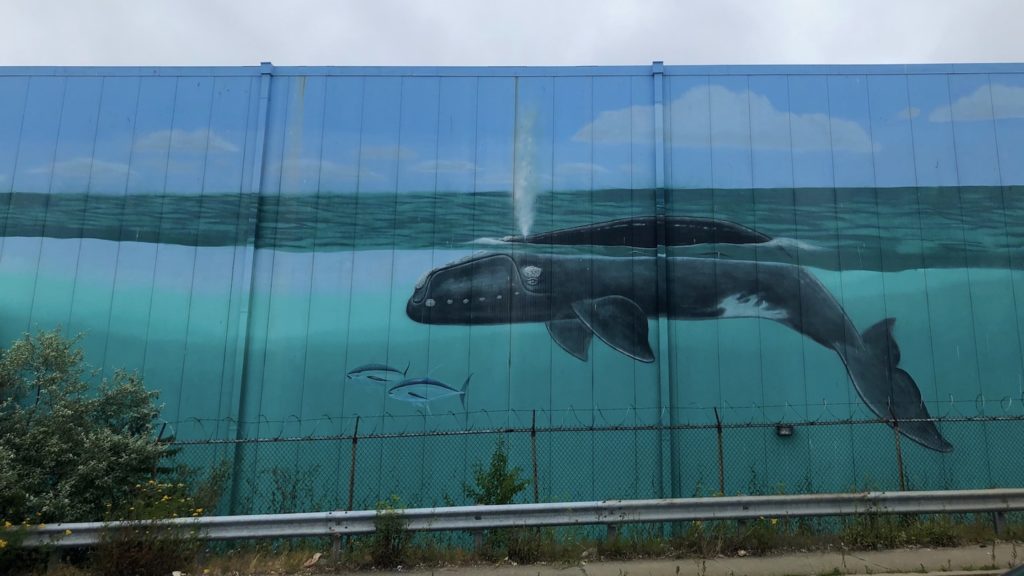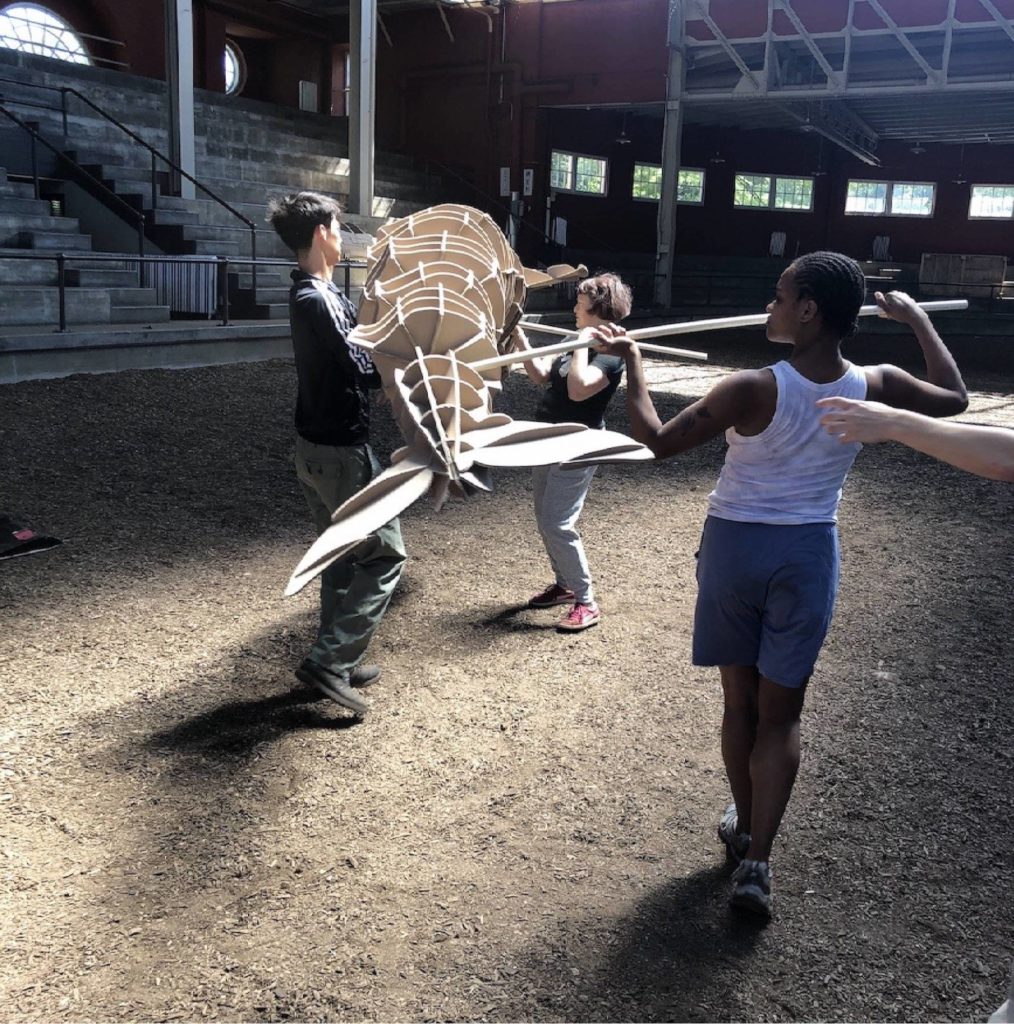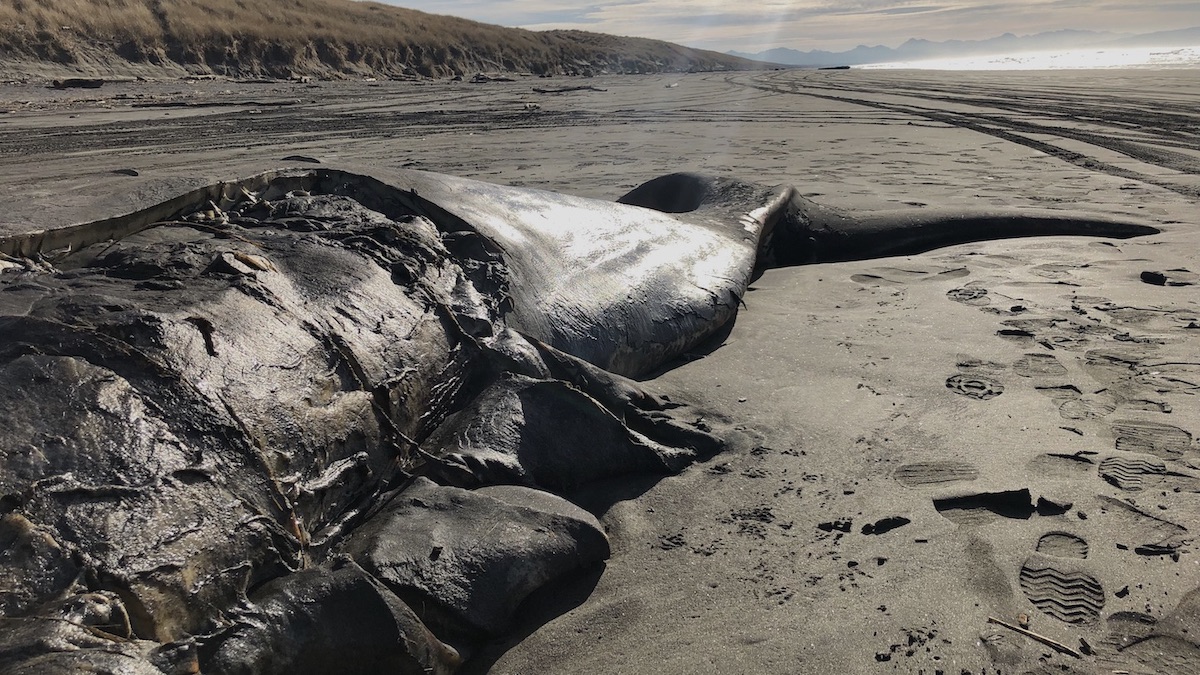Artist, actor, and performer Deke Weaver has embarked on an incredible endeavor: create a performance representing a threatened animal or habitat for every letter of the alphabet. The first installment of this life-long project, The Unreliable Bestiary: Monkey, opened in 2009, fittingly, on Charles Darwin’s 200th birthday. In the 14 years since, Weaver has created and performed Bear, Tiger, Elephant, and Wolf. In Smile Politely’s Artist of the Decade feature, Jessica Hammie wrote, “Deke Weaver’s Unreliable Bestiary performances are clever, moving, humorous, and devastating. They are transformational: You are not the same person at the end of the performances as you were at the beginning, unless you’re dead inside.”
This month will see the latest installment of The Unreliable Bestiary: Cetacean (The Whale). Described as “A live event of mystery and depth,” Cetacean promises to be “dark and haunting.” The 2 hour and 25 minute performance (plus intermission) will “feature a large cast, huge-scale video projection, dance, and live sound design, while interweaving tales of the sea and its failing ecosystems.”
Weaver originally developed the idea for The Unreliable Bestiary when he realized a lot of the projects he was working on and writing included animals: “They could just be in the house, or an animal that was a friend, but a lot of times they would take on a magic realist part of the story. For me, it was just this feeling that some of the biggest moments of revelation or just feeling that you are really part of a much bigger universe has been in relation to animals, moments with animals or moments in the wild in nature, but also moments with live performance.” Live performance, for Weaver, is where he feels “really cracked open, very emotional, and where it just felt really spiritual or holy. Not all the time…But, for me, seeing one good thing that’s really good and amazing, I’ll suffer 99 bad things for that one.”

The Unreliable Bestiary, then, is a way to combine these two things that he feels very passionate about: animals and live performance. The live performance, and the research that goes into this particular series, is “a way of shaping, of giving a frame to this notion, where if you start investigating something through a narrow lens the whole universe will open up. As you get more into the particulars of the details, you see how things are connected and it just starts getting bigger.” Weaver compared the focal-point animals of his performances to the carnival barkers that stand at the doorways of carnival tents, attempting to lure people in to the show. While the performances are about the animals, they are “also about us and our relationship with the animals and the ecosystems and how everything is deeply connected.”
The world is certainly already a different place than it was when The Unreliable Bestiary first came to fruition: “As we’ve gone on, all the stuff about climate change, global warming, pollution, it’s all ramping up and getting more intense and it’s starting to feel more urgent. It is about the animals, but almost how the animals are a canary in the coal-mine: a warning that if this animal isn’t doing well, then the whole ecosystem that that animal lives in isn’t doing well.”
This sense of urgency was certainly a common theme throughout my conversation with Weaver and his partner and collaborator Jennifer Allen. They both expressed a desire of wanting the audience, and people in general, to realize how connected everything is, and that society as it currently exists is simply not sustainable. At the same time, they don’t want the performances to be all “doom and gloom.” So that’s where humor and other elements come into play. Although Weaver emotionally admitted that it’s “feeling harder to keep the doom out and inspire people.”
The idea for Cetacean specifically came to Weaver as he read Fathoms: The World in the Whale by Rebecca Giggs. While these performances usually take three years to create, COVID changed the timeline this time around. Weaver and Allen started working on Cetacean in May 2020, shortly after the completion of Tiger (and while the world shut down). They originally thought this performance might happen in January of this year, but ultimately decided to take an extra summer for research, which allowed more time to film the animals, more time to work with the high school art classes and teachers that are part of the project, more time to raise money, and to put it together. It also allowed more time for people to feel safe in coming together again in a post-pandemic environment. As Allen elaborated: “We weren’t sure when that would feel safe. At the beginning of COVID no one knew. Do we think people can come back in 2022? I don’t think so. Let’s project it forward as far as we can.”
The research for Cetacean took Weaver and Allen to the Atlantic and Pacific Oceans, Lake Superior, Nantucket, Astoria, the Olympic Peninsula in Washington and elsewhere. They shot videos, went to libraries and museums, conducted interviews, and saw a dead, beached sperm whale. They also spent time in New Bedford, Massachusetts, the location where Moby Dick was written and a former international destination because of the profitable whaling business based out of the town.

Although it may have some ties to the 19th-century Melville whaling novel, Cetacean feels particularly timely given that the last orca in captivity just died. Weaver noted the irony that orcas “used to be thought of as ruthless, crazy, bloodthirsty. It wasn’t until people started observing them in close proximity that they started realizing how intelligent they are… and that it’s really something different. And that’s when people realized we need to get them out of the pools, and get them back into the wild.” Thinking about how we treat these animals is certainly a cause for concern. Weaver added, “There is this idea that if the top apex predators in the ocean start dying off because of us overhunting them, it’s going to be this cascade effect that will affect food security in multiple countries around the world, because everything is going to get really unhealthy underneath without the predators there.”
Weaver said he felt an increasing sense of urgency about the whales in particular after reading Giggs’ book. He learned, for instance, that one especially distressing issue relating to the whales today are the problems associated with beached whales. How does a small town deal with a 30 to 70 ton dead whale? Who pays for it? The issue is made more complicated when the blubber of the whale concentrates the different forever chemicals we have put into the environment, including plastics breaking down. The plastics are released into the environment and end up concentrated in whale blubber. So, the dead whale on a beach ends up becoming a toxic site. Even more alarming, Weaver explained, is that in Canada and Greenland in particular, beluga whale has been eaten in Inuit communities for a very long time. But, in the last 25 years, nursing mothers have now been told not to eat beluga whale because those toxic chemicals found in the blubber can now be found concentrated in their breastmilk.
The years and amount of research that has gone into the performance and project are clearly evident. Allen joked, “this is what happens with years and years of research. Then it becomes where any question can be related to a thousand different things. So, it’s a little bit of a challenge to hone it in. And that becomes the nature of our shows. An extra year to research meant more information which meant a bigger, longer show. So, we had to edit and make it streamlined so people would stay. We could have chosen for it to be a five-hour endurance piece, but we wanted it be more audience friendly than that [laughter].”

Allen choreographs the performances; a process that begins even before Weaver has written the script. Typically at the start, while Weaver is reading, they are watching movies and having conversations about how the performance might look. For Cetacean, Allen started rehearsing two years ago, working with Laura Chiaramonte, meeting once a month, improvising, developing movement vocabulary and ways to move with the sea, being underwater, or being creatures. Since this is the sixth piece, there are certain things Allen looks for: spatial patterns with how the creatures interact, sleep, hunt, how they interact with their babies, are they alone, are they in a pack? And then she starts to build the choreography around that.
Cetacean will be performed at the Stock Pavilion, a first for The Unreliable Bestiary since the same space was used for Elephant more than ten years ago. In the past, they have tried to do each performance in a new location so it is its own experience and the audience isn’t comparing to a past installment. But for Cetacean, it made sense to return to the Pavilion since they wanted an impressive, expansive space for the large screens and for the staging. Allen said that in reusing the Pavilion, “It was easy for us to think of this as a different environment because it’s the sea — it’s going to be underwater. But also, Moby Dick — You can’t talk about whales without at least referencing that idea and iconic tale. So [the space functions both as] the sea and a ship.”
Since the first year of rehearsals took place before the script was written, there was lots of improvising and experimentation. Allen said she focuses on the idea of a “living painting and living sculpture, where we are doing simple, still-life things in the background that’s making a tableau, but we are living in it. So we are moving slow motion or hanging out, knowing it will be happening in the background while Deke is telling the story over here. It’s something you can be referencing and looking at but also hearing him.”
One of the goals of The Unreliable Bestiary, according to Weaver, is getting people out of a rut. With Bear for instance, they were taking people to Meadowbrook Park, “on paths maybe they hadn’t been on before, and have things happen on the paths that definitely haven’t happened before.” The idea is to tell a story in an unusual place, and allowing a place that you thought you knew to now feel different.

In thinking of the setting, Allen added that people have expectations of certain settings. When you go to a movie theater you know what to expect. But here, the audience isn’t quite sure what to expect, and “they don’t know what’s in this box because there isn’t a box…Oh is that part of performance? I’m not sure… It opens people up to having a different type of experience.”
I asked Weaver what he hopes the audience will take away from this performance: “Probably the first thing that comes up for me… there’s a raging urgency I feel about what’s happening. The hope with a lot of these shows is to find ways to help people to see the interconnections and the network and the systems…” Allen added, “in order for them to care about them.” “Right,” Weaver responded. “So that really old idea if you can’t see it or you can’t understand it, you aren’t going to care about it, you’re not going to love it.”
There is no doubt that Weaver certainly cares about and understands and sees what’s happening. Weaver and Allen think of the entire Unreliable Bestiary as an ark of stories, or as a memorial of the natural world. As Allen explained, “In 50 years many of these animals won’t exist anymore except in movies, myths, and fairy tales. We won’t be able to see them.” The Unreliable Bestiary is adding to that ark of remembrances. Weaver added, “I can find myself getting very emotional very quickly. It’s hard for a lot of us to see. The screens are so sparkly, the air is so cool in your house…” But, as Allen added, especially in light of events even just this summer like the wildfires in Canada, it’s now harder to escape that reality.
Cetacean will run for five days, with five performances only, starting on September 28th. Because the Stock Pavilion is so large, and the event is free, tickets are unnecessary. And if you are are curious about what performance is coming after The Whale?
“Tree.”
Cetacean
The Stock Pavilion
1402 W Pennsylvania Ave
Urbana
Sept 28th to Oct 2nd
7:30 p.m.
Free (yes, really)








